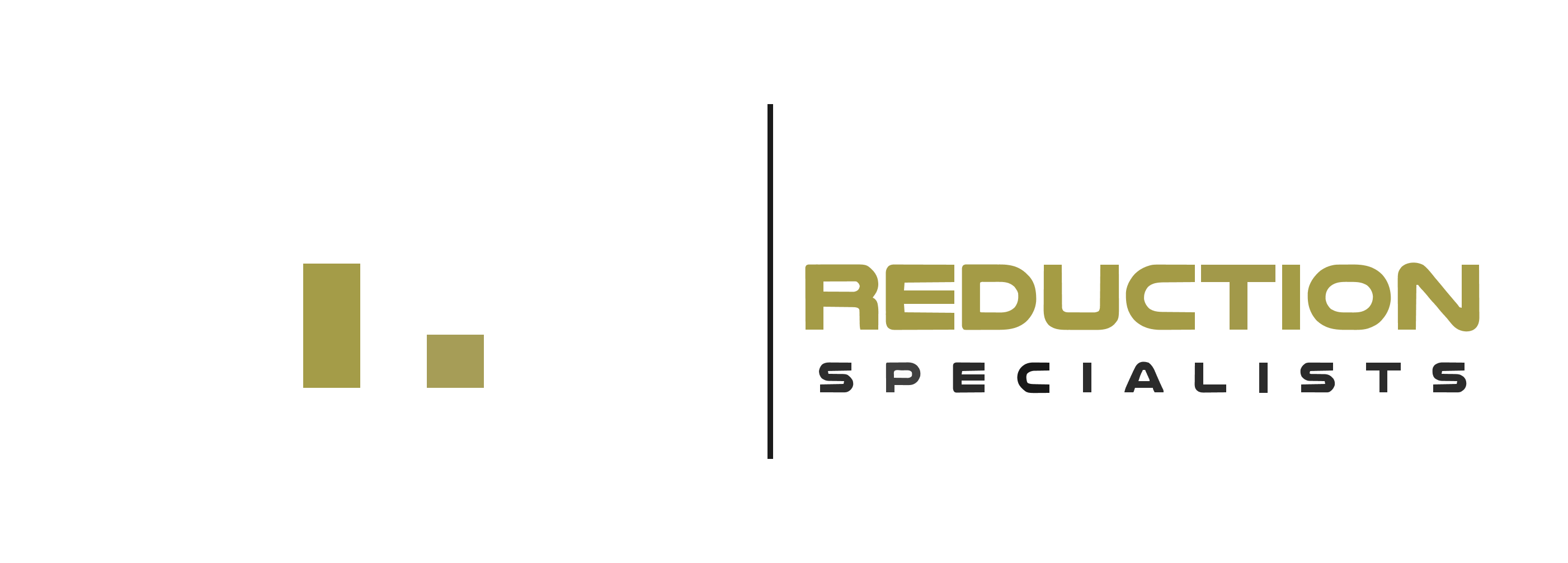QBI Deduction Planning: Essential Tips to Lower Your Business Taxes
Looking to maximize your tax savings through the QBI deduction but feeling overwhelmed by its complexities? The Qualified Business Income (QBI) deduction allows eligible business owners to deduct up to 20% of their qualified business income, potentially leading to significant tax savings. However, navigating the intricate rules and limitations can be challenging. Whether you’re a small business owner, partnership member, or S corporation shareholder, understanding how to optimize your QBI deduction is crucial for reducing your tax burden. From entity structure decisions to wage planning strategies, every choice impacts your potential tax savings. In this comprehensive guide, we’ll break down essential QBI deduction planning strategies that can help lower your business taxes. We’ll explore: • Smart entity structuring approaches • Wage optimization techniques • Income threshold management • Documentation requirements • Common pitfalls to avoid Let’s dive into these tax-saving strategies and help you make informed decisions for your business.
Key Takeaways:
- – The QBI deduction allows eligible business owners to deduct up to 20% of their qualified business income from their taxes, offering substantial savings opportunities.
- – Your choice of business entity structure (sole proprietorship, S corporation, or partnership) directly impacts your QBI deduction potential and overall tax benefits.
- – Strategic W-2 wage planning is crucial, especially for businesses approaching the taxable income thresholds, as it can help maximize your deduction while staying compliant.
- – Income threshold management is essential, as the QBI deduction has specific limitations for high-income taxpayers and specified service trades or businesses.
- – Proper documentation of qualified property and maintaining accurate records of unadjusted basis is vital for claiming the maximum allowable deduction.
Understanding Qualified Business Income
Qualified Business Income (QBI) represents the net amount of income, gains, deductions, and losses from your qualified trade or business. It’s a game-changing tax benefit introduced by the Tax Cuts and Jobs Act that allows eligible business owners to deduct up to 20% of their business income.
What Qualifies as QBI?
QBI includes income earned through various business structures like sole proprietorships, partnerships, S corporations, and some trusts and estates. However, not all income streams make the cut. Investment income, capital gains, and reasonable compensation paid to S corporation shareholders are excluded from QBI calculations.
Income That Doesn’t Count
Several types of income don’t qualify for the QBI deduction:
– Wages earned as an employee
– Interest income
– Dividend income
– Foreign currency gains/losses
– Capital gains and losses
– Commodities transactions
Special Considerations for Service Businesses
If you run a specified service trade or business (SSTB) like healthcare, law, accounting, or consulting, special rules apply. High-income service business owners may face limitations or complete phase-out of the deduction based on their taxable income levels.
Income Thresholds Matter
The QBI deduction becomes more complex when your taxable income exceeds certain thresholds. For 2023, these thresholds are:
– $364,200 for married filing jointly
– $182,100 for all other taxpayers
Above these thresholds, additional limitations based on W-2 wages and business property may apply, potentially reducing your available deduction.
???? Key Takeaway: QBI offers eligible business owners a valuable 20% tax deduction on qualified income, but careful attention to income types, thresholds, and business classification is essential for maximizing this benefit.
Entity Structure Optimization
Choosing the Right Business Structure
When it comes to maximizing your QBI deduction, selecting the optimal business structure is crucial. Different entity types come with varying tax implications and benefits. S corporations and partnerships often provide more flexibility in structuring income and wages compared to sole proprietorships.
For instance, S corporations allow you to split income between salary and business profits, potentially increasing your QBI deduction. However, you must ensure you’re paying yourself reasonable compensation to avoid IRS scrutiny.
Strategic Entity Planning
Consider converting your sole proprietorship to an S corporation if your business generates significant income. This move can help optimize your tax position through better control over wage allocation. Remember that partnerships and LLCs can also be effective, especially when dealing with multiple owners or complex business arrangements.
A key advantage of partnerships is their flexibility in allocating income and losses among partners. This can be particularly beneficial when some partners are subject to QBI limitations while others aren’t.
For businesses with substantial qualified property, maintaining a pass-through entity structure becomes even more important. This allows you to take advantage of the UBIA limitation calculation, which can help maximize your deduction when W-2 wages are limited.
It’s essential to evaluate your specific situation, including factors like:
– Annual business income
– Number of employees
– Asset ownership
– Growth plans
– Management structure
Remember that changing your entity structure requires careful planning and timing. Make these decisions well before the tax year ends to ensure proper implementation and maximum benefit.
???? Key Takeaway: Choose your business entity structure strategically, considering factors like income levels, wage requirements, and property ownership to optimize your QBI deduction while maintaining compliance with IRS regulations.
Income Threshold Management
Managing your income thresholds effectively is crucial for maximizing the QBI deduction benefits. The deduction begins to phase out at specific income levels, making it essential to implement strategic planning to optimize your tax savings.
Understanding Income Thresholds
For 2023, the QBI deduction starts phasing out when your taxable income exceeds $182,100 for single filers and $364,200 for joint filers. Once you reach $232,100 (single) or $464,200 (joint), the deduction may be completely eliminated for specified service trades or businesses (SSTBs).
Strategic Income Reduction
Consider contributing to retirement accounts like 401(k)s or IRAs to lower your taxable income below these thresholds. Business owners can also time major purchases or accelerate expenses into the current tax year to reduce income levels strategically.
Timing of Income Recognition
Plan your income recognition carefully throughout the year. If possible, defer income to the following tax year when you’re close to the threshold limits. This might involve delaying client billing or postponing the completion of projects until the new tax year begins.
Income Splitting Techniques
Explore opportunities to split income among family members through legitimate business arrangements. This can help keep individual income levels below the critical thresholds while maintaining overall family wealth. Consider employing family members or creating family limited partnerships when appropriate.
Documentation and Monitoring
Maintain detailed records of your income throughout the year and regularly monitor your progress toward threshold limits. This proactive approach allows you to make timely adjustments to your tax planning strategies before year-end.
???? Key Takeaway: Strategic income threshold management through retirement contributions, expense timing, and income splitting can help preserve your QBI deduction benefits and optimize tax savings for your business.
W-2 Wage Planning Strategies
Effective wage planning is crucial for maximizing your QBI deduction, especially if your taxable income exceeds the threshold limits. Let’s explore some strategic approaches to optimize your W-2 wages.
Balance Reasonable Compensation
Finding the sweet spot between W-2 wages and business profits is essential. While S corporation owners must receive reasonable compensation, you can structure wages to optimize both self-employment tax savings and QBI deduction benefits. Consider industry standards and your role’s responsibilities when setting compensation levels.
Timing of Wage Payments
Strategic timing of wage payments can significantly impact your QBI deduction. Consider paying year-end bonuses or adjusting salary levels before December 31st to meet the W-2 wage limitation requirements. This approach helps ensure you have sufficient wages to support your desired deduction amount.
Employee vs. Independent Contractor Status
Converting independent contractors to employees can increase your W-2 wage base, potentially enhancing your QBI deduction. However, carefully weigh this against the additional payroll taxes and administrative costs. Remember that proper worker classification is crucial to avoid IRS scrutiny.
Family Employment Considerations
Consider hiring family members as legitimate employees to increase your W-2 wage base. This strategy can provide multiple benefits – supporting your QBI deduction while creating tax-efficient income splitting opportunities. Ensure all employment arrangements are properly documented and reflect genuine services performed.
Documentation Requirements
Maintain detailed records of all wage-related decisions and calculations. This includes keeping copies of W-2 forms, payroll records, and documentation supporting your reasonable compensation determinations. Proper documentation is crucial for defending your position in case of an IRS audit.
???? Key Takeaway: Strategic W-2 wage planning involves balancing reasonable compensation, timing payments effectively, and maintaining proper documentation while considering employee classification and family employment opportunities to maximize QBI benefits.
Specified Service Trade Considerations
Understanding how your business type affects QBI deduction eligibility is crucial for tax planning. If you operate a Specified Service Trade or Business (SSTB), special rules apply that could limit your deduction.
What Qualifies as an SSTB?
SSTBs include professional services in health, law, accounting, actuarial science, performing arts, consulting, athletics, financial services, and brokerage services. The IRS specifically targets businesses where the principal asset is the reputation or skill of employees or owners.
Income Thresholds Matter
For 2023, SSTB owners can take full advantage of the QBI deduction if their taxable income is below $182,100 (single) or $364,200 (married filing jointly). Above these thresholds, the deduction gradually phases out until it completely disappears at $232,100 (single) or $464,200 (married filing jointly).
Strategic Planning Options
Consider splitting your business into SSTB and non-SSTB components when possible. For example, a medical practice might separate its real estate holdings into a different entity. This strategy could help maximize your QBI deduction for the non-SSTB portion of your business.
???? Key Takeaway: SSTB owners must carefully monitor their taxable income levels and consider strategic business structuring to maximize QBI deduction benefits, as income thresholds directly impact deduction eligibility.
Property-Based Deduction Maximization
Maximizing your QBI deduction isn’t just about wages – your business property can play a crucial role too. The IRS allows you to factor in the unadjusted basis of qualified property (UBIA) when calculating your deduction limits.
Understanding UBIA Calculation
The UBIA of qualified property includes the original cost of tangible, depreciable business assets like machinery, equipment, and buildings. This calculation can significantly boost your deduction potential, especially if your business is capital-intensive with substantial physical assets.
Strategic Property Investment
Consider investing in new business equipment or property before year-end. This approach not only helps with the QBI calculation but also provides potential depreciation benefits. Remember, the property must be used in your qualified trade or business and still within its depreciable period.
Timing Your Purchases
Plan your property acquisitions strategically. Property purchased and placed in service during the last quarter can still count towards your UBIA calculation for the entire year, potentially increasing your QBI deduction limit.
???? Key Takeaway: Strategic investment in qualified business property can enhance your QBI deduction through the UBIA calculation, offering an alternative path to maximize tax benefits when wage-based limitations apply.
Advanced Planning Tactics
Strategic Income Management
Effective QBI deduction planning requires careful management of your taxable income levels. Consider maximizing retirement plan contributions or timing major business expenses to stay below phase-out thresholds. This approach helps maintain full deduction eligibility while building long-term wealth.
Entity Structure Optimization
Your business structure significantly impacts QBI benefits. For service businesses approaching income limits, consider splitting operations into separate entities. Keep core services in one entity while moving auxiliary functions like equipment leasing or real estate into another to maximize deduction potential.
Wage Planning Strategies
Balance W-2 wages carefully to optimize your QBI deduction. For S corporations, structure reasonable compensation to satisfy IRS requirements while maximizing qualified business income. Consider hiring family members or converting contractors to employees when beneficial for wage limitation purposes.
Documentation Systems
Implement robust tracking systems for business income, wages, and asset basis. Maintain detailed records of business activities, especially if operating multiple entities. This documentation proves crucial during IRS reviews and helps substantiate your QBI calculations.
???? Key Takeaway: Advanced QBI planning involves strategic income management, entity structuring, wage optimization, and thorough documentation to maximize tax benefits while ensuring compliance with IRS requirements.
Conclusion
As you navigate the complexities of QBI deduction planning, remember that strategic decisions about your entity structure, wage planning, and income management can significantly impact your tax savings. By implementing the strategies discussed in this guide, you can optimize your qualified business income deduction while staying compliant with IRS regulations. Take time to evaluate your current business structure, review your W-2 wage levels, and assess your taxable income thresholds. Consider consulting with a tax professional who can help you develop a personalized QBI deduction strategy tailored to your specific business situation. Regular monitoring and adjustments to your tax planning approach will ensure you maximize your deduction benefits year after year. Start implementing these QBI deduction planning tactics today to reduce your tax burden and reinvest more money back into your business. Your proactive approach to tax planning now will lead to substantial savings in the future, helping your business thrive and grow.
FAQs
Can I claim QBI deduction if I have multiple businesses?
Yes, you can claim QBI deduction for multiple businesses. Each qualified trade or business is calculated separately, and then the deductions are combined. However, if you have losses in some businesses, they must be netted against the income from other qualified businesses.
How does real estate income affect QBI deduction?
Rental real estate income can qualify for QBI deduction if it meets the safe harbor requirements or rises to the level of a trade or business. Property owners must maintain separate books, provide 250+ hours of rental services annually, and keep detailed time logs.
Does QBI deduction apply to foreign business income?
No, QBI deduction only applies to domestic business income. The qualified business income must be earned from a trade or business operated primarily within the United States to be eligible for the deduction.
What happens to unused QBI deductions?
Unlike some tax benefits, unused QBI deductions cannot be carried forward or backward to other tax years. The deduction must be used in the current tax year or it will be lost, making proper planning crucial.
How do charitable contributions impact QBI deduction calculations?
Charitable contributions don’t directly affect QBI calculations, but they can impact your taxable income threshold. Since QBI deduction is limited based on taxable income, significant charitable giving might indirectly reduce your available deduction.
Can I claim QBI deduction if I’m a part-time business owner?
Yes, part-time business owners can claim QBI deduction if their business qualifies as a trade or business under tax law. There’s no minimum time requirement, but the business must be conducted with continuity and regularity for profit.





![10 Smart Income Deferral Strategies to Reduce Your Tax Burden [Expert Tips]](https://taxreductionspecialists.com/wp-content/uploads/2024/11/tax-burden-768x604.jpg)

